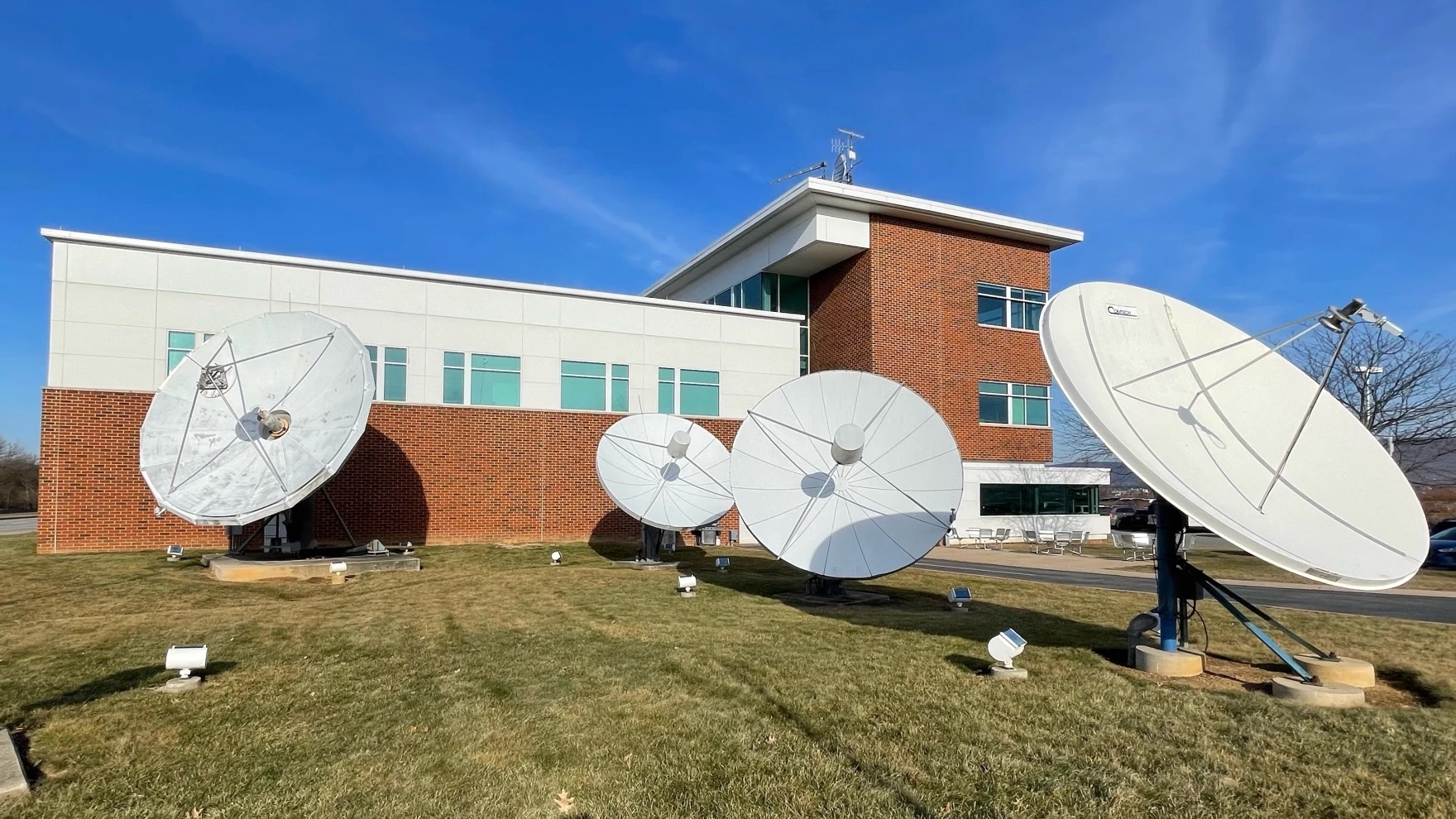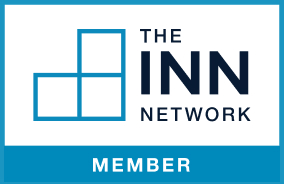Analysis finds most station boards fall short in reflecting community diversity
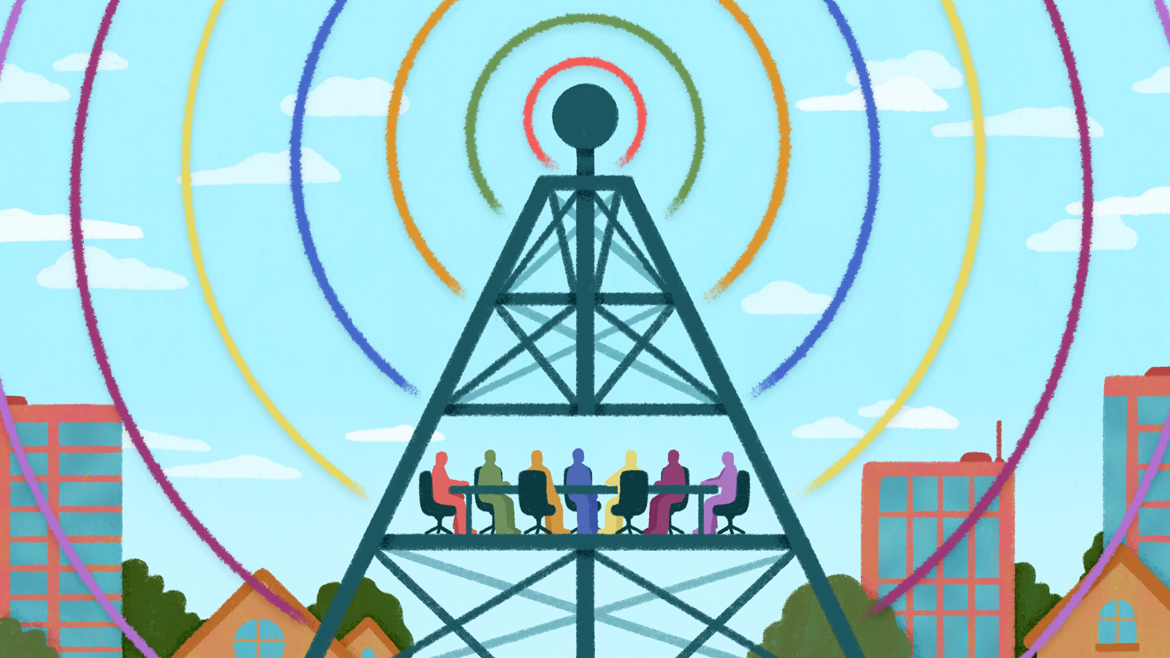
Paige Stampatori
An analysis of FCC data finds that most station boards fail to represent the racial and ethnic diversity of their communities, undercutting the system’s mission to reflect the people it intends to serve.
According to an analysis conducted by Current, fewer than 15% of 205 licensees for which data was available had boards that meet or exceed the diversity of the licensee’s city or state of license. More than 19% of the boards consisted entirely of white members. Just six of the 40 all-white boards were at stations in areas with a population that is at least 95% white.
Station boards, which primarily consist of people outside of their organizations, play an important role in shaping the future of stations. They provide oversight, hire top leaders and work with those leaders to develop strategic plans. Board members also play a key role in fundraising, connecting organizations with major donors and committing their own funds.
Board diversity is “one of the most important facets of public media,” said Adam Livingston, COO of Livingston Associates, a consulting firm that works with stations and often assists boards in executive searches.
Livingston said he sees board diversity as not only an issue of equity but also “a critical factor for building resilient, forward-looking organizations.” Boards that understand that “will see success in what is increasingly looking to be a challenging time for public media,” he added.
Our findings
Current’s analysis of board diversity is based on biennial ownership reports that stations file with the FCC. The forms contain demographic data about more than 3,300 board members. The public broadcasters in our sample filed the reports between October 2023 and March 2024.
We did not include reports from stations licensed to school districts, universities or tribal entities because their boards oversee operations beyond their stations. CPB gives Community Service Grants to 544 licensees, according to a spokesperson.
To compare each station’s board to the demographics of its service area, we used the U.S. Census Bureau American Community Survey’s five-year estimates for each broadcaster’s city or, for the 34 state networks in our sample, the state it serves. Our calculations of diversity reflect the representation of the area’s minority racial groups in the area and on the board. (Check out the data and learn more about our methodology.)
Thirty of the 205 licensees had boards that were as diverse or more diverse than their areas, with the most diverse board being 33.7% more diverse than its area. Nine of the licensees had boards that were more than 40% behind their areas in diversity. The licensees whose boards met or exceeded the diversity of their city or state consisted of 10 state networks, nine radio stations, seven television stations and four joint licensees.
Of the boards that were more diverse than their communities, the community licensees skewed toward more rural areas, with more than 73% located in towns of less than 100,000 people. The state networks with comparatively diverse boards were also in more rural, less diverse states. None of the six community licensees in cities with more than 1 million people had diverse boards compared to their communities.
The demographics of public media board members generally lined up with data from a 2021 BoardSource study of more than 650 nonprofit boards. That study also found that 19% of the nonprofit boards studied had all-white boards.
“Boards may be getting more diverse, but they are far from representing the communities they serve,” the study found.
Reflecting a rapidly changing state
Board diversity has been a key focus among stations that prioritize diversity, equity and inclusion. Public Media for All, a coalition that advocates for public media organizations to serve all audiences, said in its founding vision that it sought a public media community in which organizations maintain “a Board of Directors that is representative of the diverse demographics of the community.” (After an update last year, PMFA’s mission statement no longer mentions boards.)
For stations with an all-white board or “an all-older board or some other remnant of past practice, then obviously that becomes a challenge that is not solved simply by getting a couple of people of color on the board,” said New Hampshire Public Radio CEO Jim Schachter. “There’s work to be done.”
NHPR’s board has been working to reflect the “quickly changing” racial demographics of its state since before Schachter began leading the station in 2019, he said. According to its most recent diversity report, the organization’s board is 78% white, 11% Black, 6% Latinx or Hispanic and 6% Asian or Pacific Islander. New Hampshire is nearly 90% white.
Increasing board diversity is part of the station’s DEI goals and is codified in its 2023-25 DEI Strategic Plan. The station has signed on to complete Public Media for All’s action items for organizations.
On its website, NHPR says it “recognizes six pillars of diversity in its work: cultural and ethnic diversity, generational diversity, regional diversity, socioeconomic diversity, gender diversity and diversity of perspectives. We actively seek Trustees, Community Advisory Board members and staff who embody all these aspects of diversity; they enrich our thinking and help ensure that our work reflects multiple perspectives.”
To advance those goals and work to prevent bias in selecting board members, the station has introduced “a little bit of science into what is still a very human and relationship-based activity” of filling vacant board seats, Schachter said.
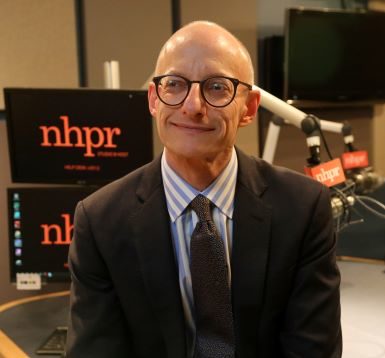
Each year, the station’s board members complete a self-assessment to create an overall board profile and identify gaps. The board then uses that information to identify the voices and skill sets it aims to recruit. A board self-assessment is one of 10 steps suggested in a National Council of Nonprofits article about how to develop a more diverse board.
The board’s nominations and governance committee filters prospective board members with a matrix of desired qualities that it updates annually. A board task force is also studying how to “create pipelines of people who might not otherwise be coming to the attention of board members,” Schachter said.
Recruiting a diverse board starts not with recruiting people from diverse backgrounds but “several steps” before recruiting, Schachter said. “If the organization doesn’t serve a diverse public,” he said, then people from diverse backgrounds “are not going to emerge as caring enough about the station to want to serve.”
Inclusion should come first
For stations looking to change their board composition, a first step is an “analysis of power,” said Minal Bopaiah, author and founder of the consulting firm Brevity & Wit.
Changing board composition “is about redesigning the organization,” Bopaiah said, so it’s important to understand what GMs can do on their own and what they need board approval to change.
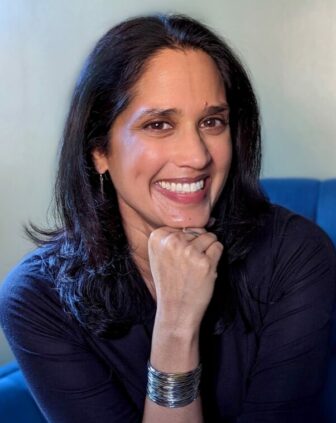
“Then the second question becomes, ‘What is the GM’s relationship with the board?’” Bopaiah said. “Can they go and influence the board composition and how the board is run, or are they in a lower power position? It’s very important to me that we never set up somebody with less power to be trying to change people with more power. It doesn’t work. Usually that person ends up getting fired.”
But working to build an inclusive board should come before considering the board’s diversity, she said. That could include being able to listen when people present different ideas, resolving conflict without avoiding it and not being threatened by difference.
However, people often “move to the optics of diversity without doing the hard work of inclusive behavior, development [and] equitable systems,” Bopaiah said. “And then you get a diverse-looking board where the people who are from marginalized communities feel really alone and don’t feel like they’re welcomed. Their ideas cannot be heard because the people who have traditionally held power have not done their work to hear ideas that are different from theirs.”
“If you do inclusion and equity right, diversity will take care of itself,” Bopaiah said.
Homogeneity can’t serve the community
WYSO in Yellow Springs, Ohio, took an approach similar to NHPR’s after getting the rare opportunity to build a governing board from scratch when it became independent from Antioch College in 2019. While about 86% of Yellow Springs residents are white, the board is about 78% white.
WYSO set out to reflect the community. Its vision statement, adopted in 2021, states that the station’s “programs, staff, boards and volunteers” aim to be “fully reflective of the communities we serve and strive to serve”
“If you want to actually serve the community, you have to be reflective of the community,” said WYSO GM Luke Dennis. “And we try to do that at every level. We don’t succeed all the time, but our board is a bright spot in terms of our diversity.”

Dennis said the station created “a kind of a skills and life experiences matrix” to recruit board members, taking account of factors such as age, county residency and skill sets. WYSO was also “very intentional about race” in its considerations, he said.
“We’re intentional about making sure that people’s lived experiences would help us think about how to serve the community better,” Dennis said. “And if you have a room full of white people with similar educational backgrounds and similar income levels or whatever, that homogeneity is tough if you want to actually serve the community.”
“A good board can help lead you toward better community engagement,” he said.
To recruit members, the station looks to its community advisory board, which is larger than the governing board and also aims to reflect the community.
“If we meet somebody really great who seems to love what we do, we might start by inviting them to join the CAB,” Dennis said.
The question boards need to answer
One challenge boards face in achieving diversity is that they haven’t answered the question “Why does it matter?” said Joan Garry, formerly executive director of the LGBTQ advocacy nonprofit GLAAD and now a nonprofit leadership consultant.
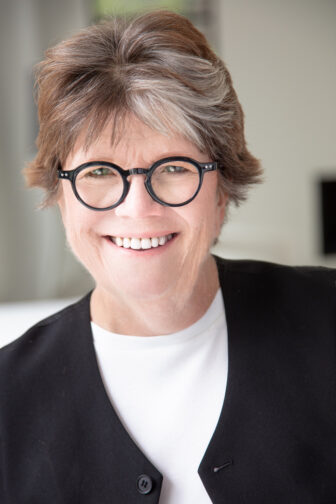
“If the answer is ‘We need more women’ or ‘We need more BIPOC folks on our board,’ they should go spend their time doing something else, because that’s actually not the correct answer,” she said. If the board says it’s important to get “a better pulse on their community and their listeners,” that’s “not a bad answer,” Garry said.
“But there are lots of ways to take the pulse of the community and the listeners without asking someone to join your board,” she said.
Instead, Garry said she believes boards should want to diversify because they want to be “richer and smarter, with diverse points of view that offer different vantage points” and to make better decisions.
Another issue she sees is that nonprofits often have a “butts in seats” strategy for filling vacancies on boards and measure success by filling vacancies. But that strategy lacks intentionality, she said.
Garry instead advises organizations to take a “casting and curating” approach and develop a “composition matrix” to help develop the ideal makeup of a board. The matrix should take into account skill, expertise and lived experiences that the board wants among its members. Then, when the board identifies gaps in its current composition, it should look to fill open spots “by identifying as diverse a candidate pool as you possibly can.”
“One of the biggest challenges that we face is that we bring on people because they are diverse and not because they add a specific skill or expertise the board desperately needs,” she said. Those people who are new to the board “see themselves and feel themselves as checking a box.”
Even organizations that have implemented a matrix to help inform their search can get tripped up by asking, “Do you know an HR professional? Do you know an X? Do you know a Y?” she said. They should instead ask “Do you know someone who might lead us to an X?”
“I think that they get tripped up because they think, ‘I have to have a name of someone who would be interested right away,’ as opposed to ‘I have no idea if this person would be interested, but my goodness, this person is so well-connected, is a previous nonprofit executive director, knows how to fundraise” and knows people who could be a fit for the board, she said.
A shift towards inclusion
Station leaders at Nine PBS began rethinking their approach to their board in 2019. At the time, Amy Shaw was leading the station through a shift in strategy while serving as interim CEO following the unexpected death of former leader Jack Galmiche.
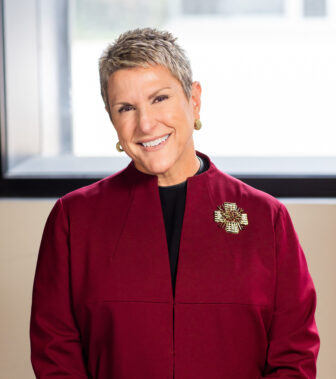
That involved rethinking the board and being more representative of the community the station serves, said Shaw, now the station’s CEO. In particular, the station aimed to increase representation of women, younger people, Hispanics, African Americans and residents from Illinois counties served by the station.
With help from a consultant, Nine PBS aimed to shift from a “C-suite board,” which involved seeking out local corporate executives, to a board of people who are influential in their communities.
That has forced the station to look beyond its usual networks when adding board members, she said.
If boards are intentional about seeking out influential members, Shaw said, “that gives you some very clear things to be thinking about in terms of, ‘OK, we can’t connect with the same people.’ We have to put ourselves out there in a way to develop new relationships in communities where we may not already have those relationships.”
At Detroit PBS, board diversity has been a focus as part of an “entire effort” to commit to diversity, said CEO Rich Homberg.
“Fifteen years ago, we took a really deep look at where we were as an organization and how we serve the city and recognized that we really needed to embrace the entire community,” Homberg said.

Now the station’s 35-member board is “much more diverse and much more engaged than it was over a decade ago,” he said. At the time of the station’s latest report to the FCC, the station’s board was composed of more than 45% people of color. Detroit’s population is more than 88% people of color.
One change was implementing stricter term limits, Homberg said. The station previously had term limits for board members, but “if we really liked you, we put you on the executive committee, and you could be on the executive committee forever. And that was a weak structure.”
The station now has 12-year term limits for board members and emeritus board members. Board chairs can serve for two years. When a new chair assumes the role, the board identifies their successor as well. A year later, the board identifies the successor’s successor.
The structure aims to balance continuity and new voices on the board, which at times can be conflicting goals, Homberg said.
When developing its board, Detroit PBS looks for advocates for the organization, ambassadors with large networks and people with different business skills, he said. Their financial capacity is also taken into account, with board members expected to give or raise $2,500 per year.
A board member once told Homberg that board members should commit to donating a minimum of $10,000 to the organization. Homberg replied, “If we do that, there’s a whole range of people … that won’t be able to be members of the board.”
“There are boards in some organizations where the expectation is at least $10,000 a year and the board members can stay forever,” he said. “That won’t work for a public media outlet that is embracing the entire community.”
Partnerships with community groups have also helped grow the network of potential board members. Making those connections has a “multiplier” effect of “having leaders who feel heard” and connecting the station with a “new generation of potential board members,” Homberg said.
“It takes a long time to change a culture,” he said. “It takes a long time to build relationships in the community. … The biggest challenge is it requires absolutely to be relentlessly committed to getting this done and never with a sense that it’s done.”
Addressing socioeconomic diversity
FCC data doesn’t shed light on how much board members earn. Station leaders said they’re increasingly mindful of socioeconomic diversity when developing boards.
The “joke” in public media is that “it’s all bankers and lawyers on these boards, and that’s pretty accurate,” Livingston said.
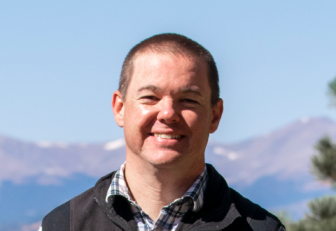
“In a perfect world, it would be because they really want to serve the organization,” he said. “And I think a lot of times that’s the case. But I think that there are board members who just joined because they want to be on boards, and that’s an easy one for them to be on.”
High-level jobs often encourage employees to serve on boards and allow them to do board work on company time, Livingston said. He’s noticed that when he asks board members when they can meet, they often say during work hours — a “luxury,” he said.
“If you don’t have a job that allows for that, then all of a sudden it becomes way more challenging,” he said.
Shaw said Nine PBS attempts to address socioeconomic diversity by not requiring board members to give a minimum amount, as some boards do. Instead, it asks members to make a “personally meaningful” gift, she said.
“We don’t want board giving to be an impediment” to people joining the board, she said. “… This comes down to age diversity as well. When you have a more senior-level person in an organization, oftentimes they have accumulated more resources because they’ve been doing the work longer. When you have younger board members who are in their 30s and into their early 40s, they may not have had that time to accumulate those resources.”
Younger board members also may have young families, “so their concerns are different,” she said.
Meanwhile, NHPR asks board members to make the station one of their top three giving priorities but doesn’t require a minimum gift, Schachter said.
“We try to make your economic capacity not be either a qualifier or a disqualifier,” he said.
For station leaders looking to change their boards, Livingston said the first step is for the organization’s leader “to plant the seed, to have that conversation with the board,” he said. “It’s a hard conversation to have.”
But it’s important to tell a board that isn’t prioritizing diversity that it needs to “and here’s why,” Livingston said.
Stations can also effect change by setting and enforcing term limits for board members. “Term limits can be really powerful,” Livingston said, freeing up seats to make changes on the board that better represent the community. He estimates that roughly half of the boards he works with have term limits.
Making these changes is important, he said, because conversations among “truly diverse” boards “tend to be richer and lead to deeper discussions.”
Current Digital Editor Mike Janssen contributed to data analysis and visualization for this article.



